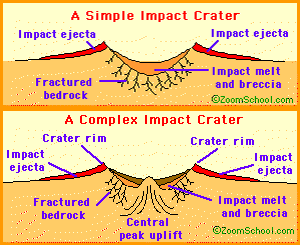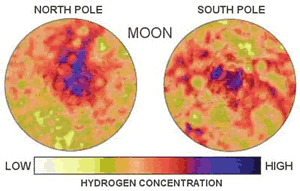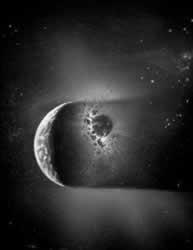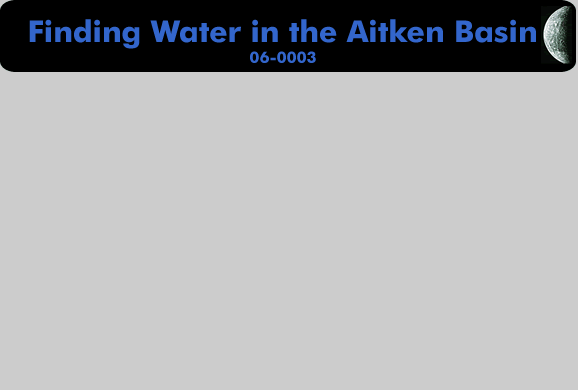Aitken Basin
Our first step to living among the stars is conquering the moon. We will need water to live, but it would cost about $72,000 a gallon to transport to the moon, which is not cost-effective for a full lunar life. [1] If we find water, however, the cost will drop significantly. Where in the barren wasteland of the moon can we find water?
On the south pole of the moon, there is an impact crater 13 kilometers deep and almost 2,500 kilometers across. [2] It is called the Aitken Basin. This crater is the largest known in the solar system. Like the rest of the moon, it is rocky. Its floor has concentrations of iron, titanium, and magnesium. It may even be deep enough to have gotten down to the moon's upper mantle. This is one of the most convenient spots to search for water. |
 |
Image from www.enchantedlearning.com |
This is backed up by information from the 1994 Clementine spacecraft. For 71 days orbiting the moon, it mapped out 38 million square kilometers in eleven colors found in the spectrum. This data showed maria (what used to be seas of lava), and took pictures of the South Pole-Aitken Basin that suggested hydrogen. [3] Since oxygen is already on the moon, hydrogen is an important factor in moon water.
But how did the water get there in the first place? Water ice from meteorites bombarding the moon may have escaped. [4] Most had probably evaporated due to low gravity, lack of atmosphere, and intense sunlight, but some areas of the moon seldom receive sunlight. These permanently cooled areas, such as the Aitken Basin, would likely be cool enough to keep this water ice from evaporating or even melting. These ice deposits may still be intact, so it is possible that digging for water could be helpful.
 |
The Lunar Prospector noticed that the moon's North Pole has more ice than its South Pole. However, the Aitken Basin is deeper, so it has better access to the water ice. So, to start, the South Pole is an easy way to figure out if we are actually finding water or not. But for the most results, the North Pole is more abundant in ice. |
There are other perks to having a station at the moon's south pole. Equipment sensitive to heat will be calmed by the fairly constant temperature of the shadowed moon regions. Solar cells could be developed for ridding us of our fossil fuel addiction. Even a space gas station is not too far off if we develop a base.
| Plus, because the Aitken Basin is so deep, it has revealed some of the upper mantle of the moon. This is the older part of the moon, likely around since it first formed. Scientists may discover how Earth and the moon really did form. Is the giant impact theory, where an asteroid walloped Earth and broke off a humongous chunk of rock, right? |  |
Image from content.answers.com |
So the Aitken Basin is a valuable place. We cannot pass up this opportunity for a trip to the moon. It could greatly advance our scientific knowledge. Europe, Japan, China, and India are planning their moon expeditions, as are we. [5]
We are, in fact, planning an expedition for a Lunar Reconnaissance Orbiter to explore the moon in 2008, equipped with four water-detecting devices, and to send a fully operational Crew Exploration Vehicle no later than 2014. [6] Simulations of a rover were quite successful, and became easier when the robot became semi-autonomous. [7]
With all these moon missions being planned, who knows what will happen?
Will there be multiple rovers all at the Aitken Basin? Will we have
to add "other robots" to our list of hazards? Or will we get
there first?








